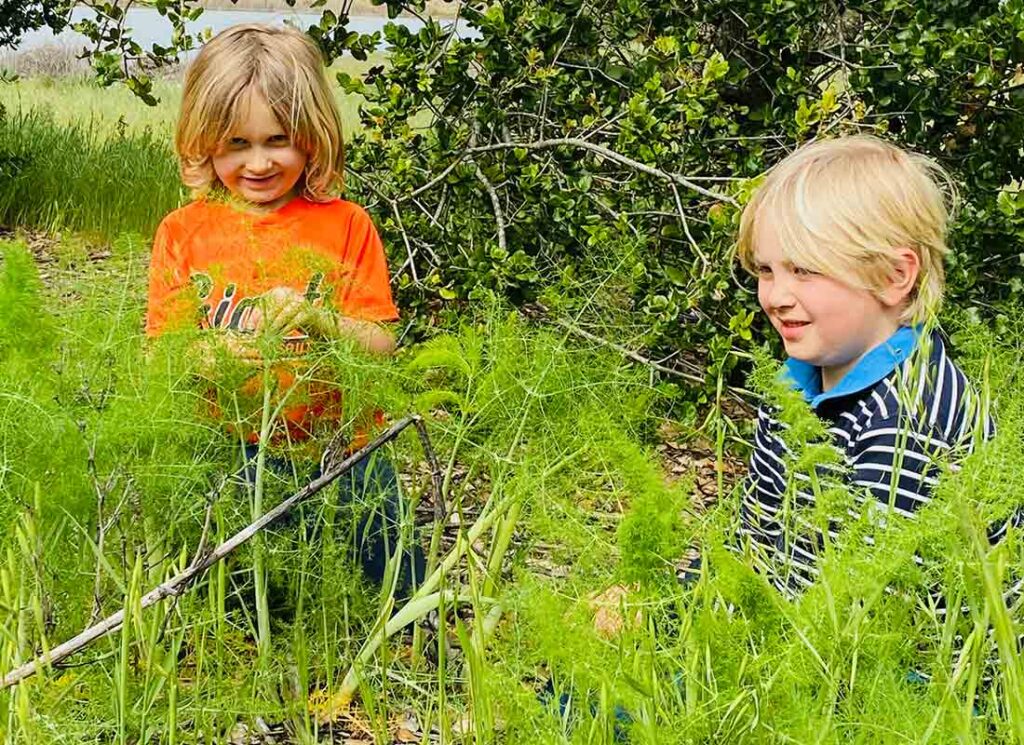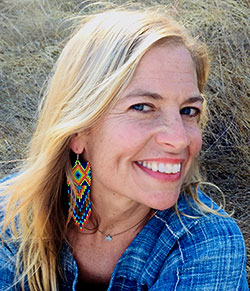
Climate Kids: Backyard Foraging For the Whole Family
Spring is here said the bumblebee
How do you know said the old oak tree
I just saw a daffodil
Dancing with the fairies on the windy hill
— Children’s verse
Spring has sprung in Novato! While we are sheltering in our homes, blossoms are opening up outside, the birds are singing and Mother Nature is in Her glory with bursts of color, smell and tastes. Yes, tastes. Did you know that Springtime brings delightful nibbles everywhere? You have to look no further than your backyard, a local trail or a patch of wayside garden to find a tender leaf, a sweet flower or a tantalizing green you can snack on or use in a recipe or for medicine.
Backyard foraging is a fun way to connect with Nature during outdoor playtime, where you can make plant friends who you will meet again and again each year. You can bring a few wild plants inside to make pesto, add to smoothies, salads or soup to boost flavor and nutrition.
Before you sample or harvest, make sure you are foraging in an area that is not sprayed with pesticides or herbicides and is ideally not within easy access for dogs. Be sure you are correctly identifying a plant before you eat it, as some plants are toxic and will cause a tummy ache or can make you very sick. You can use a field guide or an app like Picture This which identifies a plant instantly once you’ve taken a photo.
And do thank Mother Nature for the abundance – take only what you need and will use, and always leave enough for your plant friend to come back next year.
Here are a few wild edibles to look for this Spring:
We are almost at the end of the season for two favorite weeds, or volunteers, that crop up in early Spring and stay for a month or two: miner’s lettuce and chickweed.
Miner’s lettuce is high in vitamin C. It was named so because the California gold miners warded off diseases like scurvy by eating it.
Miner’s lettuce is a delicious salad green – crisp, bright and mild. It likes some shade and moisture, so look for it after the rains and in the shadier parts of your backyard. You can eat leaves, stem, and flower. My family keeps a basket in the kitchen, which we use for gathering greens for our dinner salad. You can harvest miner’s lettuce, give it a rinse and toss it right into the salad bowl for extra crunch. We like to top our avocado toast with miner’s lettuce and chickweed for an extra burst of Springtime flavor and nutrition.
Chickweed, a cooler weather garden volunteer, crops up in the early spring. Chickweed is also high in vitamins and minerals and is cooling and drying, so it can help with skin irritations, like eczema, skin rashes, cuts, and bites. We add it to basil leaves in our homemade Wild Greens pesto and use it in making lotion for treating baby eczema.
If you are lucky enough to have wild fennel growing in your yard, you can harvest it and add it to so many dishes, just as you would fresh fennel from the grocery store or farmer’s market. We venture out to the local trails near the lagoon in our neighborhood, where we forage for the pretty yellow flowers that mark the wild fennel all along the trail. Sweet like licorice, fennel is nourishing and helps with digestion. It’s considered invasive, so bring some home and add it to your meals.
And commonly found weaving their way along fences and into gardens, lovely nasturtium is so fun to find and to pick. The flowers add bright pops of color and a peppery zest to salads or creamy goat cheese on toast or even brighten up your morning bagel with cream cheese and a sprinkle of nasturtium. For a fun treat, add the flowers to ice cube trays of water and freeze! Then add a few cubes to a pitcher or glass of water and voila ~ Flower water!
These are just a few of the many wild edible plants you can find all year round. Remember, plants are our friends – they give us food, medicine, habitat for insects, birds, and animals, build the soil and bring beauty everywhere. Learning how to forage for them can be so much fun and a great way to eat your greens. Take time to learn about these and other wild plants, and you’ll have friends wherever you go.
Sources:

Chrisandra Fox Walker is a yoga teacher, Ayurvedic Health Counselor, permaculture passionista and mother of three young boys, who love to forage sour grass and miner’s lettuce each spring. Chrisandra@gmail.com
